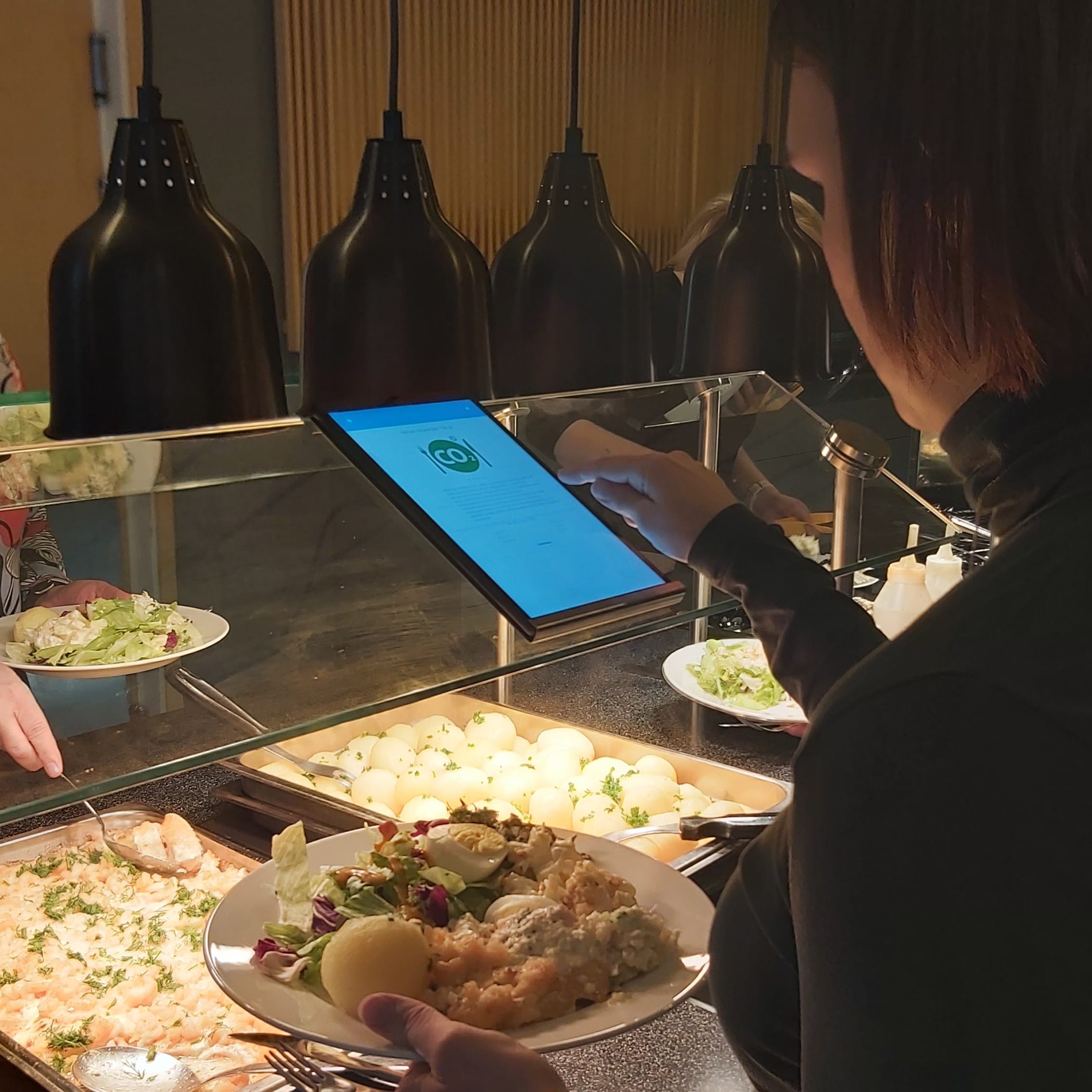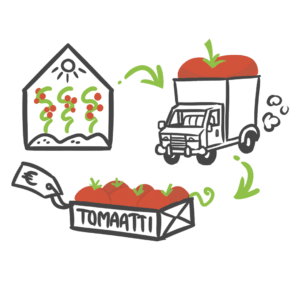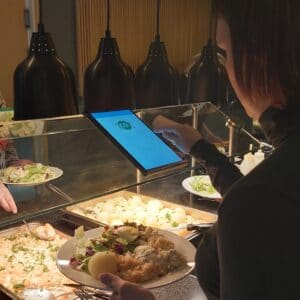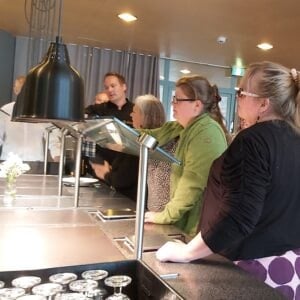Peräpohjola Folk High School restaurant Hanna Å has reduced the carbon footprint of its lunches. Regarding its meat dishes, the carbon footprint of a lunch was reduced by more than a quarter. Previously, the carbon footprint of a lunch containing meat was, on average, 1.03 kg. Today it is 0.75 kg. The carbon footprint of a vegetarian meal was reduced by half, from 0.75 kg to 0.35 kg.
The key factor in reducing the carbon footprint was the use of fresh ingredients and a preference for seasonal vegetables. Hanna Å abandoned ready-made meals, and today they prepare the food themselves, starting with potato peeling. Another important factor was a preference for local suppliers in procuring ingredients.
In addition, the restaurant increased the percentage of vegetables in its meat dishes. A good example of this is its beef bourguignon. The percentage of vegetables found in the old recipe was 17%. Now it is 43%. This is how Hanna Å’s kitchen has reduced meat consumption by 20%.
Adding vegetables to a lunch also increases its health effects. In addition to the carbon footprint, Hanna Å did not want to overlook the impact food has on health and well-being. The restaurant has also received good feedback on how its food tastes.
These results have been achieved through Peräpohjola Folk High School’s VÄHEÄ project, the starting point of which was to make Hanna Å a low-carbon restaurant. A new lunch line was also provided during the time of the project. In the design of the lunch line, attention was paid to the fact that it would guide diners to make low-carbon dining choices. For example, the water faucet was placed before other drinks. Today, diners are drinking water with their meal more often than milk. In addition, salad consumption has increased by 20% as, with the new lunch line, more attention has been paid to the presentation of the food by emphasizing the lighting and using serving dishes of various sizes.
Scales were also installed on the lunch line so that diners can weigh their lunch and compare its information with the carbon footprint values of a lunch in the Jamix Menu application. With this, diners can take note of the role their choices have on the carbon footprint of their meal.
Along with the new lunch line, Hanna Å also gave up trays and switched to one big plate. This reduces water consumption since the restaurant no longer needs to wash trays and salad plates.
Eliminating the use of trays also reduced plate waste, which refers to food that is placed on a plate but remains uneaten. Switching to one plate reduced diners’ habit of taking extra food on their plates.
Another good practice brought about by the VÄHEÄ project is the utilization of food waste. Leftover food from the lunch line is used in preparing meals for the next few days. Leftover side dishes from lunch have been used, for example, in salads. In addition, the Hanna Å kitchen has paid attention to reducing manufacturing and inventory waste. Today, the amount of ingredients is more in line with their actual need since recipe and menu planning, as well as inventory management, have been developed.
Peräpohjola Folk High School has also developed measures that will help Hanna Å’s kitchen staff gain as accurate information as possible on the number of diners per day. The teaching staff and the head chef regularly exchange information so that the number of students in the building can be predicted. The head chef can then order ingredients based on this number. With these measures, inventory waste, in other words, the number of out-of-date products in stock has been reduced considerably. For example, there was an average of 56 kg of inventory waste per month in the 2020 fall semester. As for 2021, the average amount of inventory waste was 15 kg per month.
The VÄHEÄ project has shown that a restaurant can impact the carbon footprint of its food with its own choices. At Hanna Å, the effect has also been seen in the food’s flavor and healthiness as well as euros saved.






